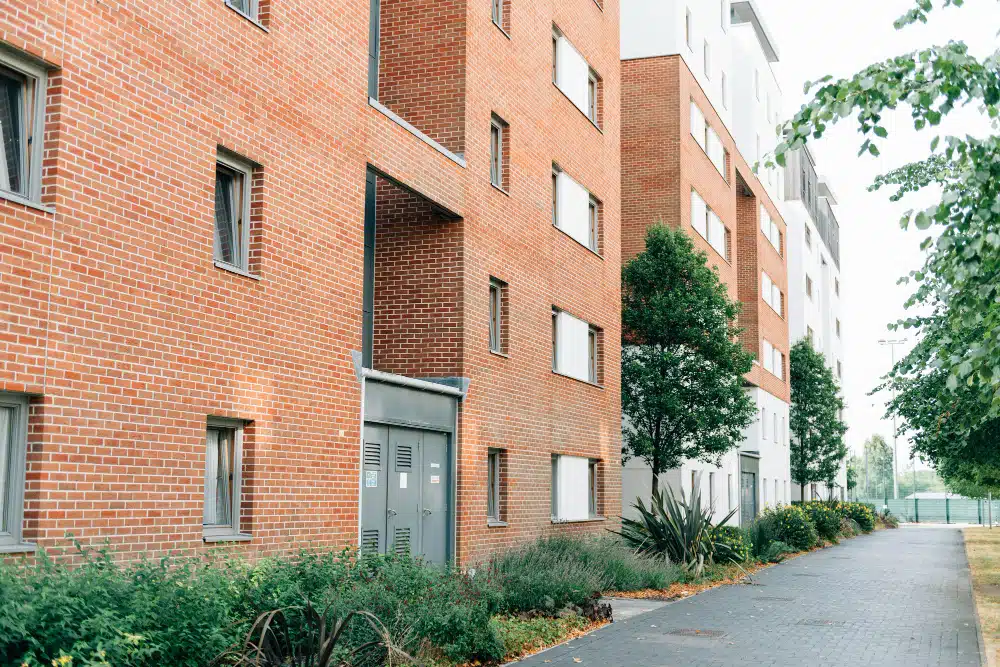When it comes to winning an apartment injury case in Texas, proving liability is crucial. In order to obtain compensation for your injuries, it’s essential to establish negligence on the part of the property owner or manager. However, navigating the legal intricacies can be challenging. That’s why understanding the essential elements for winning such a case is vital.
In Texas, to prove liability in an apartment injury case, you need to establish four key elements. Firstly, you must demonstrate that the property owner or manager owed you a duty of care. Secondly, you need to show that there was a breach of that duty, such as a failure to maintain safe premises or address hazards. Thirdly, you must prove that the breach directly caused your injuries. Finally, you must provide evidence of the damages you have suffered as a result of the incident.
By carefully gathering evidence, working with experienced legal professionals, and effectively presenting your case, you can maximize your chances of winning an apartment injury lawsuit in Texas. In this article, we will delve into each element in detail, providing you with the information you need to successfully prove liability and obtain the compensation you deserve.
Understanding Liability in Texas
In Texas, liability refers to the legal responsibility one party has toward another, particularly in the context of negligence. When you are injured on someone else’s property, such as an apartment complex, the question of liability becomes pivotal in determining whether you can successfully claim compensation. The law in Texas requires property owners and managers to maintain a safe environment for their tenants and visitors. This duty of care implies that they must take reasonable steps to prevent foreseeable injuries.
Understanding liability is essential because it sets the foundation for any injury case. When you step onto a property, the owner is obligated to ensure that the premises are safe. This obligation includes regular maintenance, prompt repairs, and adequate warnings about potential hazards. If a property owner or manager fails to uphold these responsibilities, they may be found liable for any injuries that occur as a result. Therefore, comprehending the nuances of liability can significantly influence the outcome of your case.
Moreover, Texas follows a modified comparative negligence rule. This means that even if you share some blame for the incident, you may still pursue damages, provided your fault is less than that of the property owner. However, your compensation will be reduced by your percentage of fault. This legal framework emphasizes the importance of clearly establishing liability, as it directly impacts the compensation you may receive for your injuries.
Essential Elements for Proving Liability in Apartment Injury Cases
To successfully prove liability in an apartment injury case in Texas, you must establish four essential elements: duty of care, breach of duty, causation, and damages. Each of these components plays a critical role in your ability to claim compensation. Understanding these elements will help you navigate the legal landscape more effectively.
The first element, duty of care, requires you to demonstrate that the property owner or manager had an obligation to provide a safe living environment. This duty is typically assumed when a landlord enters into a rental agreement with a tenant. The landlord must ensure that the premises are free from hazardous conditions that could cause injury. If the property owner fails to maintain a safe environment, they may be deemed to have breached this duty.
Next is the breach of duty, where you must show that the property owner or manager acted negligently in maintaining the premises. This could involve ignoring repair requests, failing to address known hazards, or not adhering to safety codes. The breach must be clearly linked to the specific incident that caused your injuries, which brings us to the third element: causation. You will need to prove that the breach directly led to your injuries, establishing a clear connection between the negligence and the harm suffered.

Gathering Evidence for Your Case
Evidence is the backbone of any successful personal injury case. In an apartment injury scenario, gathering comprehensive and relevant evidence can make the difference between winning or losing your case. Key types of evidence include photographs, witness statements, maintenance records, and medical reports. Each piece of evidence serves to corroborate your claims and establish the necessary elements of your case.
Photographic evidence is particularly powerful. Taking pictures of the accident scene can provide visual proof of hazardous conditions, such as broken steps, inadequate lighting, or slippery surfaces. These images can effectively illustrate the circumstances that contributed to your injury. Additionally, obtaining witness statements from anyone who observed the incident can further strengthen your case. Witnesses can provide an unbiased account of what transpired, reinforcing your claims of negligence.
Documentation is also crucial in establishing liability. Maintenance records can reveal whether the property owner took appropriate steps to address known issues. Medical reports will substantiate the extent of your injuries and show that they resulted from the incident. By collecting and organizing this evidence, you create a robust foundation for your case, making it easier to demonstrate negligence and secure the compensation you deserve.
Establishing Negligence in Apartment Injury Cases
Establishing negligence is a multi-step process that requires a thorough understanding of how the law defines it. In Texas, negligence involves proving that the property owner or manager failed to act with reasonable care, which directly resulted in your injury. This concept encompasses both the duty of care and the breach of that duty. By demonstrating these elements, you can build a compelling case against the responsible party.
To prove negligence, you often start by identifying the specific duty of care owed to you as a resident or visitor. For instance, if the property owner was aware of a hazardous condition, such as a broken railing, and failed to fix it, this inaction constitutes a breach of their duty. The law expects property owners to be proactive in maintaining safe environments. If they neglect this responsibility, they open themselves up to liability for any resulting injuries.
Furthermore, you must also demonstrate that the property owner’s actions (or lack thereof) were not just negligent but also unreasonable under the circumstances. This often involves comparing the property owner’s actions to what a reasonable person would have done in a similar situation. For example, if the owner knew about a dangerous condition but took no steps to remedy it, this could be considered gross negligence, significantly strengthening your claim.
Proving Causation in Apartment Injury Cases
Proving causation is another critical element in establishing liability in an apartment injury case. Causation refers to the direct link between the property owner’s breach of duty and your injuries. In legal terms, this is often divided into two categories: actual cause and proximate cause. Understanding these distinctions is essential for effectively presenting your case.
Actual cause, also known as “cause-in-fact,” establishes that your injuries would not have occurred but for the property owner’s negligence. For example, if a broken step caused you to fall, leading to injuries, you can argue that the owner’s failure to repair the step directly resulted in your accident. This straightforward link is often easier to prove than proximate cause.
Proximate cause, on the other hand, involves a consideration of whether the injuries were a foreseeable result of the breach. This element is more subjective and can sometimes complicate a case. For instance, if a property owner failed to fix a broken light in a stairwell, leading to a slip and fall due to poor visibility, it may be argued that the injuries were a foreseeable result of their negligence. Proving both actual and proximate causation requires a careful examination of the circumstances surrounding your injury.

Expert Witnesses in Apartment Injury Cases
In many apartment injury cases, expert witnesses can provide invaluable insights that bolster your claims. These professionals have specialized knowledge or experience relevant to your case and can help clarify complex issues for the court. For instance, a safety engineer might assess the premises to determine whether the property owner adhered to safety regulations, while a medical expert could explain the extent of your injuries and their long-term effects.
The role of expert witnesses is particularly significant in establishing negligence and causation. Their testimony can provide context and credibility to your claims, making it easier for juries or judges to understand the implications of the evidence presented. For example, if a property owner ignored safety codes, an expert in building regulations could testify to the specific violations and how they contributed to the hazardous conditions.
Choosing the right expert witnesses is crucial for your case. Ideally, they should have relevant qualifications and experience that align with the specifics of your injury. Their ability to communicate complex information in a clear and understandable manner can significantly impact the effectiveness of your case. By leveraging their expertise, you can strengthen your argument and improve your chances of obtaining compensation for your injuries.
The Role of Insurance Companies in Apartment Injury Cases
Insurance companies play a pivotal role in apartment injury cases, as they are often responsible for compensating victims. When you file a claim after an injury, your case is typically handled through the insurance policy of the property owner or manager. Understanding how insurance companies operate can help you navigate the complexities of your case more effectively.
Insurance companies often aim to minimize their payouts, which can lead to challenges for injury victims. They may attempt to dispute liability or downplay the extent of your injuries, seeking to limit their financial responsibility. This is why gathering strong evidence and presenting a compelling case is essential. Having proper documentation and expert testimony can help counter the tactics employed by insurance adjusters.
Additionally, it’s vital to be aware of the potential for low initial settlement offers. Insurance companies may offer a quick settlement to resolve claims without admitting liability. However, these offers often fall short of covering your actual damages. It’s essential to assess the true cost of your injuries, including medical expenses, lost wages, and pain and suffering, before accepting any settlement. Engaging a knowledgeable personal injury attorney can help you negotiate effectively and ensure you receive fair compensation.
Hiring a Personal Injury Attorney for Your Apartment Injury Case
Hiring a personal injury attorney can significantly enhance your chances of successfully proving liability in an apartment injury case. An experienced attorney will have a deep understanding of Texas law and the specific nuances involved in premises liability claims. They can guide you through the legal process, ensuring that all necessary steps are taken to build a strong case.
One of the primary benefits of working with an attorney is their ability to gather and present evidence effectively. They can help you identify crucial evidence, from witness statements to expert testimonies, and organize it in a way that clearly illustrates negligence. Additionally, an attorney can manage communications with insurance companies, allowing you to focus on your recovery rather than dealing with complex negotiations.
Furthermore, a personal injury attorney will be familiar with the tactics often employed by insurance companies and will know how to counteract them. They can help you navigate any legal hurdles that arise during the case and ensure that your rights are protected throughout the process. By hiring an attorney, you are not just obtaining legal representation; you are also gaining a partner committed to helping you seek justice and compensation for your injuries.

Conclusion: Seeking Justice and Compensation in Apartment Injury Cases in Texas
Navigating an apartment injury case in Texas can be daunting, but understanding the essential elements of liability can empower you in your pursuit of justice. By establishing the duty of care, demonstrating a breach of that duty, proving causation, and documenting your damages, you can build a compelling case against the property owner or manager.
Gathering evidence, utilizing expert witnesses, and engaging with insurance companies are all critical components of the process. Additionally, hiring a personal injury attorney can provide the expertise and support necessary to navigate the complexities of your case.
Ultimately, by taking these steps, you can maximize your chances of obtaining the compensation you deserve. Remember, you are not alone in this journey; there are resources and professionals available to help you seek justice and recover from your injuries.





























